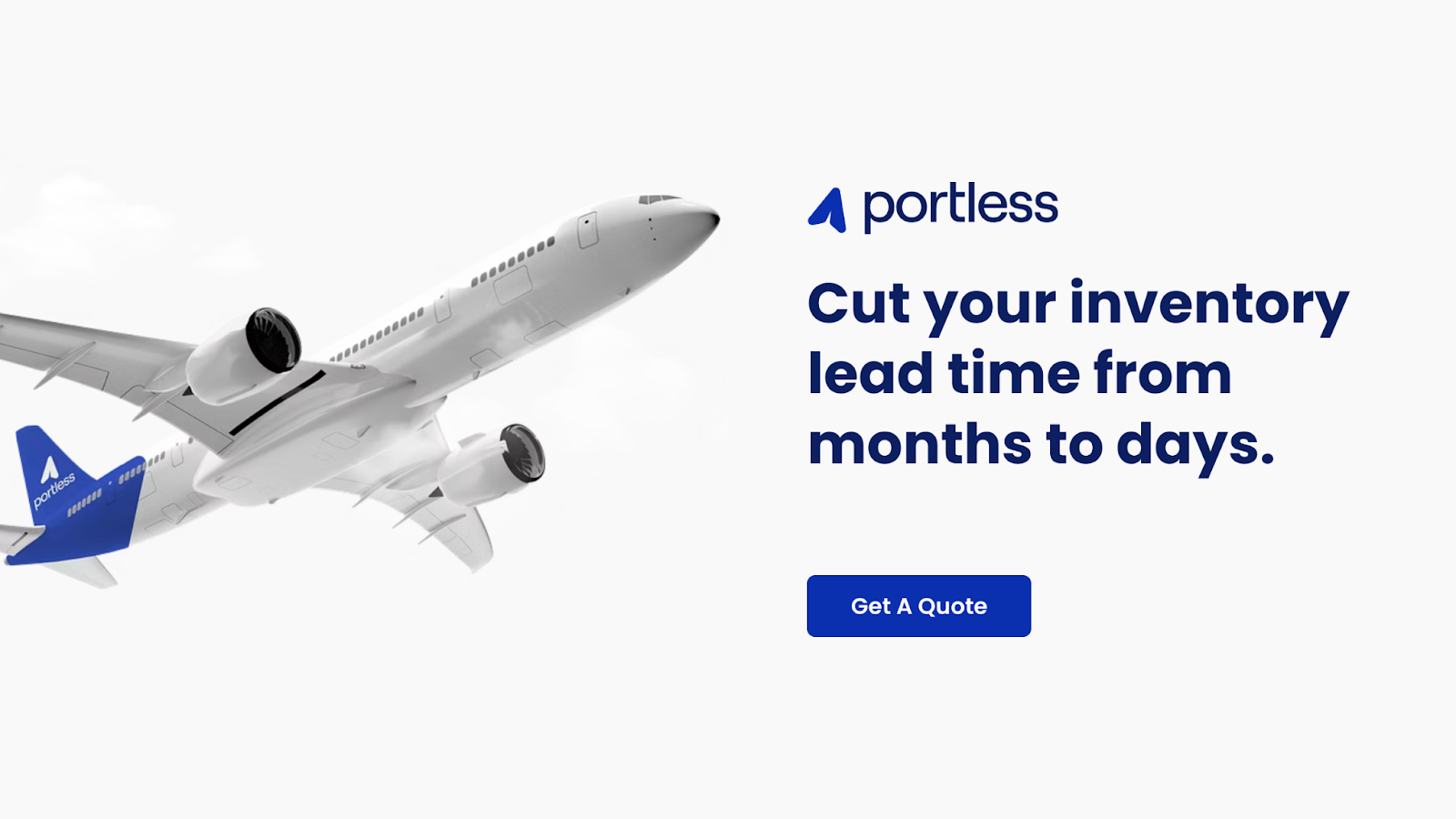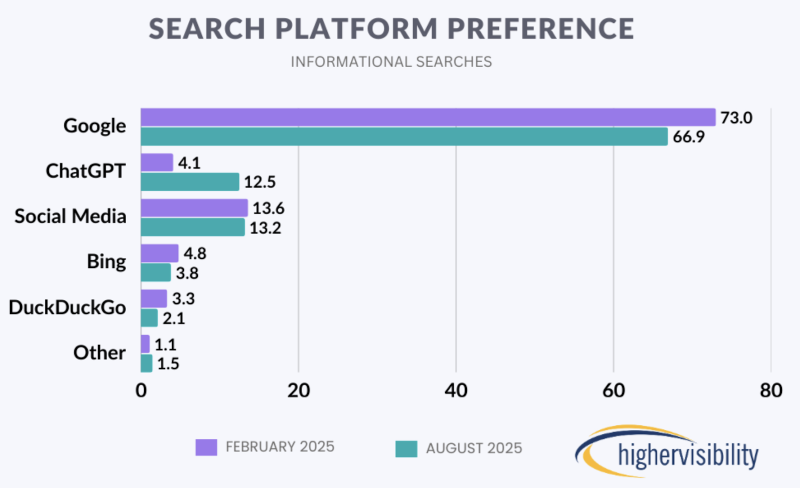The Most Ignored Ad Lever
🧠 Conversion Cue Visibility For BOF Conversions, Google Search Slips as ChatGPT Triples in Use, and more!

Hey there Smarty 👋
Are you geared up to catch the latest and greatest in quick shorts?
And just a quick heads-up! If you stumbled upon us through a friend, make sure to subscribe here! That way, you’ll never miss out on the trending shorts.

Together with Portless
📦 Still Waiting 60-90 Days for Inventory? You're Losing Sales

Every brand knows that waiting months for inventory kills growth.
While your competitors wait 60-90 days for containers, you could be restocking in under a week. That's the difference between empty shelves and record sales.
Here's what Portless unlocks instead:
✈️ Ship directly from your factory to customers in just 6 days
📦 Restock best-sellers in 3-5 days (not 3 months)
🚀 Test new products in days, not quarters
📊 Never show "out of stock" to customers again
With Portless, brands cut lead times by 90% with direct fulfillment logistics. Your products ship days after manufacturing, no containers, no warehouses, no waiting.
Turn on Shopify's "keep selling when out of stock" toggle with confidence. While others wait for containers, you're already shipping, selling, and scaling.
Get a custom quote for your brand now →

🧠 Conversion Cue Visibility: The Most Ignored Lever in Your BOF Ads
Most bottom-of-funnel ads fail not because the offer is weak, but because the decision-making cues are invisible.
We treat the last step like a nudge when it needs to be a slam dunk. And the truth is, even strong offers collapse if the 5 key cognitive cues aren’t immediately visible to the shopper. That’s why we’ve built a framework to audit, prioritize, and optimize these micro-signals across mobile and desktop, for maximum BOF conversion lift.
The 5-Point Cue Audit for Purchase-Stage Creatives
Your final pitch lives and dies by what visibly signals trust, value, and urgency in under 2 seconds. Here’s what to audit:
- Scarcity Signal: Words like “last 3 days,” “only 12 left,” or countdown visuals create immediate action bias. But they’re often buried below the fold or locked in captions. Overlay them boldly, within the top 15% of screen real estate.
- Trust Anchors: Ratings, testimonials, expert badges, or “over 10,000 sold” cues reduce friction. Especially on mobile, this must be within swipe-frame view without needing a pause or scroll.
- Benefit Headline: Most ads lead with hype or humor, but your top-right quadrant (on mobile) should carry a direct, unmissable benefit: “Sweat-proof for 48 hours,” “Reduces frizz in 1 wash,” etc. Think outcome, not product.
- Offer Clarity: “25% off” isn’t enough. Stack it: “25% off + free brush kit + shipping today.” Bundled value clarity outperforms single-line offers by 30–45% in direct A/B tests.
- Next Step Instruction: Every BOF ad needs a visible, action-oriented CTA. “Tap to claim before midnight” beats “Shop now” in urgency-weighted click-throughs. Your CTA must look clickable, especially in UGC.
Bonus Layer: 👁 Behavior-Backed Cue Testing (Without Creepy Data)
Instead of relying on invasive user tracking or biometric heatmaps, use aggregated scroll-depth and click-path data from your analytics stack (GA4, Hotjar’s anonymized session metrics, or Microsoft Clarity). Map this against CTA placement and copy visibility to detect which cues are being missed vs absorbed.
Run variant testing where only the position of elements like “Free shipping”, “Money-back guarantee”, or “One-time offer” changes, keeping design and copy constant, to isolate visibility vs message effects. This lets you pressure-test your creative against real-world browsing behavior without violating user privacy.
Why It Matters
Most BOF ads suffer from “Offer-Invisible Syndrome.” The message is technically present, but perceptually absent. And in a scroll-first world, perception is the only metric that matters.
Don’t just write better copy. Audit how your cues land visually.

The $9 Decision That Pays for Itself in Days

Every quarter, another channel flatlines. CAC climbs, conversions drop, and the pressure for answers intensifies. The truth? Funnels aren’t broken; the buyer’s journey has shifted under your feet.
Rewriting the DTC Rulebook is built from campaigns that sold to the most skeptical buyers.
Inside, you’ll see the exact behavioral shifts dismantling funnels and get plug-and-play systems like the Community Cultivation Canvas, Emotional Storytelling Framework, and Owned Media Checklist ready to launch the same day.
Buy now and you’ll also unlock two bonus playbooks plus 2,000+ Viral Video Hooks (updated monthly):
- Networked Growth Engines – Build acquisition loops powered by community, referrals, and partnerships.
- Financial Alchemy – Advanced cashflow and timing strategies to protect margins and scale faster.
These tools were curated after 100+ days of research and are valued at over $900. Today, you can own the complete 3-in-1 bundle for just $9.
Get your copy now and fix the leak before next quarter’s numbers land!

🔍 Google Search Slips as ChatGPT Triples in Use
AI tools are rapidly reshaping search behavior in the U.S., with Google’s dominance slipping and ChatGPT surging in adoption. A Higher Visibility survey of 1,500 users shows a notable shift in daily habits, highlighting fractured discovery paths across platforms.

The Breakdown:
1. Google’s Market Share Drops - Google’s share of general info searches fell from 73% in February to 66.9% in August 2025, marking a clear erosion of dominance. Even in local search, a Google stronghold, AI doubled its share to 10%.
2. ChatGPT Use Nearly Triples - ChatGPT jumped from 4.1% to 12.5% of user preference in six months. Daily AI tool usage overall more than doubled to 29.2%, while weekly users hit 27.7%. Meanwhile, “never” users dropped sharply from 28.5% to 16.3%, signaling mainstream adoption.
3. Search Habits in Flux - Platform switching rose from 28% in Feb to 35% in Aug, showing users are actively rethinking how they find information. Younger users increasingly rely on a mix of TikTok, Instagram, and ChatGPT for discovery.
The data confirms Google is no longer the undisputed entry point for search. With AI tools quickly gaining trust and daily use, visibility now depends on appearing across multiple ecosystems. Search is no longer centralized; it’s fragmented, and increasingly AI-driven.

🚀Quick Hits
🎄 Black Friday isn’t won by spending more; it’s won by testing faster. Insense gives you a Q4 content engine: 20+ ad variations per creator with lifetime rights, under $150, ready in 14 days. Book your free strategy call before Sept 5 and get $200 for your first campaign.
👓 Meta’s Hypernova AI glasses, expected at Connect 2025, will enter production this year with 200,000 units planned, featuring AI tools plus a right-lens AR display, priced at $800 to rival Apple’s Vision Pro.
📉 Social media management tool Later dropped Elon Musk’s X after costly API changes, joining Sony, Microsoft, and Nintendo in abandoning integrations, while focusing instead on platforms like Instagram, TikTok, YouTube, and LinkedIn.
📊 Google is reportedly exploring a spin-off of its ad-tech arm, as regulators scrutinize its dominance. Upcoming trials could force Ad Manager or AdX divestiture, with agencies noting unusual buy-side outreach.
🔎 Google says AI Max for Search has no conversion minimums, but requires Smart Bidding. Smaller advertisers using exact and phrase match keywords may see the greatest lift, provided landing pages and tracking are optimized.

That’s a wrap for today! Tell us your thoughts about today's content as we line up more Shorts! And don’t hesitate to share this with someone who’d adore it. 🥰
